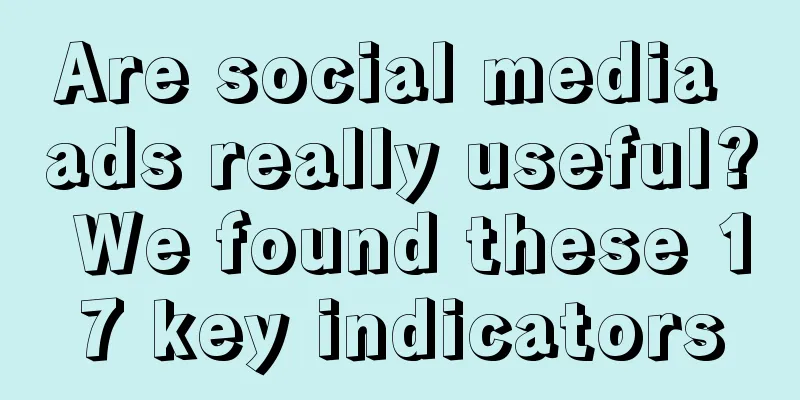Brand Dragon Ball

As the market environment changes, the importance of brand as a comprehensive discipline of philosophy and science in the business world has been recognized by more and more people. Nike is more expensive than Li Ning after it has a trademark; Apple, after it has a trademark, even its power bank can be priced many times higher. Not to mention luxury brands such as Chanel, Bulgari, and Prada. Since the brand is so important, we need to draw a strategic map for the brand to lead to eternity, so that the brand can sell quickly, for a long time, widely, and even forever. To lead the brand to eternity, you need to collect seven dragon balls. 1. The First Dragon BallEstablish the highest mission of the brand's existence: To create a timeless brand, we need to ask ourselves some questions that seem to be common sense, but are extremely important: Why should we create a brand? Why should consumers pay a high price for the products under our brand? More precisely, a brand that is committed to becoming timeless needs to demonstrate its sense of purpose wherever its market can reach, at least in its own field. Like all industry leaders, timeless brands must not only shoulder their responsibilities, but also exceed the industry average and lead. What was our original intention when we created the brand? Now that the brand is developing well or encountering some problems, what is our brand mission now? Has our brand set clear goals, such as goals for scale, sales or profits? Does our brand have the confidence to achieve its own goals and ideals? Do the brand's goals and vision match our target consumer groups? For example, Nike's brand goals are very consistent with the group that values sportsmanship. Although Nike is facing some problems in the Chinese market, as time goes by and the environment improves, the Nike brand will definitely be able to solve these temporary problems. Can the brand's goals provide a continuous driving force for the brand? Or is it just an exciting and challenging action? As a brand founder, what do you think is the brand belief you created? What is your belief? What is the unique corporate culture belief formed by employees? Does the brand you created have a unique style and attitude? Are you determined to pursue the brand's mission? Is this mission highly authoritative in the industry? Can it inspire people to pursue their own mission? Apple's extraordinary mission can send a great call to employees and consumers. For brand founders, we need to think about whether we are willing to do our best to achieve the brand mission. Does your brand have unique characteristics? Or is it forward-looking and leading? 2. The Second Dragon BallMake the brand a place of desire and belonging for consumers: Timeless brands need to create a sense of belonging for their customers, so that all customers can get something they desire. Does the brand set a clear target group to guide the brand's design and proposition? Does the brand's target group have a distinctive and motivating effect on the brand's core customers and "strategic target groups"? Apple's high-end, Muji's lifestyle, and Tesla's technological image have this effect. (Although Tesla's car quality may not be as good as BYD's, BYD lacks incentives for consumers.) Can the brand's mission be activated, or does it only have a conventional influence? Is the brand's goal limited? Or can it be used to unlimited imagination? Can the brand's goal find users who can help spread the brand's information (such as the Victoria's Secret show in previous years, Chanel's fashion blog, and the kiss discount festival that Xibei wants to try to create) . Does the creation of a brand require more wealth than others, material wealth or spiritual wealth? Does the brand have the requirements to create brand norms and brand alliances? Does the brand create a sense of desire to reach the pinnacle with random elements? Does the brand create a complex relationship between the strategic target group? Is the brand's strategy consistent with the target group? Who or what is the brand against? Who is against the brand's behavior? Are you intentionally or unintentionally shutting out non-target customers so that brand customers can feel privileged? Does the brand make good distinctions between potential and actual buyers, or are there more people who want to buy than those who can afford to buy? Does the brand make good use of limited editions, seasonality, and special allocations to stimulate sales? (This is what the American Express Black Card does, for example.) Do the target customers of the brand wear the brand logo on themselves, or associate themselves with the brand in other ways? Or are the target consumers trying to hide your logo? Brands such as LV and Chanel have achieved that consumers are willing to wear accessories with the brand logo on them. 3. The Third Dragon BallFind a good way to interact with consumers: How do brands interact with consumers? Is the interaction based on a confident attitude? Or a standard attitude? Eternal brands do not sell products, but attract customers to consume. This is what Drucker said: marketing is not sales. Real marketing starts from product design. Marketing is the sum of a series of behaviors. The purpose of marketing for enterprises is to make sales unnecessary. Apple never promotes its products or makes sales, it only communicates and contacts. When contacting, it will not appear too greedy or aggressive. Timeless brands will consider the acceptance of consumers while constantly surpassing themselves. Can the brand demonstrate strong confidence and appeal? Does the brand have a clear and clear position? (Sometimes, we really need to put aside political factors and look at those brands that withdraw from certain countries. On some things, brands do need a clear position.) Does the brand maintain its aloof and uncompromising spirit? Can the brand accept all the economic impacts brought about by the brand strategy? When the brand shows its pride appropriately, does it gain the respect of consumers? (For example, Hermès’s policy of not accepting returns. Of course, it does not comply with China’s three guarantees policy.) If brands use the celebrity effect, are these celebrities brand users and admirers, or paid performers? (Many Chinese celebrities who endorse domestic brands are basically paid performers. Do you remember Wang Han endorsing Laotan Pickled Cabbage? A video leaked from the set showed that Wang Han didn't eat it himself, but dumped it into the trash can.) When attention is low, does the brand offer promotions and discounts? When the brand interacts with customers, does it get enough attention? Can people who don’t buy the brand’s products feel or experience the brand culture? In addition to paying the media to promote the brand, can the brand itself carry out marketing activities or become a brand medium? (For example, Red Bull does this very well.) 4. The Fourth Dragon BallTell consumers a legendary story: Telling consumers a story that is relevant to the brand and easy to spread is the most important marketing method for any brand. However, eternal brands need to turn their stories into brand myths. Have you explored the symbolic meaning of the brand name? Have you understood the ritual sense of the brand name? What is the core of your brand? Does the brand story match the image? Is the brand name provocative? Does the brand allow the target customer group to be part of the brand building? Does the brand realize the brand story through actions and make such efforts unremittingly? Does the brand elevate the brand story to the level of brand myth? Is the brand myth instructive? Does the development of the brand myth maintain the core of the myth while developing the idol temperament? For example, the elegance of the Chanel brand. Can the brand's customers or non-customers describe the brand's myth in three sentences? As the founder of the brand, can you do this? 5. The Fifth Dragon BallMake the product different and unique: Make the brand product unique, have real value, and have higher advantages than most brands, so that the brand can prosper. Top brands put their products in the most important position and give them the closest attention, so that they can be respected as they deserve. Does the brand product go beyond the core defined by the brand myth? Does the brand transform consumers’ “rational belief” in the brand into “trust in the brand because they are attracted by the brand story”, thereby emotionalizing brand marketing and ultimately achieving the goal of connecting with consumers? In the process of development, does the brand develop products and services with the purpose of gaining the respect of consumers? Do the brand products have soul and express the brand story? Are the rules of use of the products closely related to the brand? Are the brand assets properly allocated so that the brand image can reach a position that can surpass the brand trademark value? Does the brand convert the language and code to fit its own products or the marketing model of other fields? Does the brand accept customized services? Do Lv brand products really have the image of idols? Does the brand regularly update its idol image to adapt to the trend of the times? Does the brand product have a "holy grail" status in the brand myth or among similar products? 6. The Sixth Dragon BallBorn for a dream: The brand's mission needs to be taken seriously, and the brand myth must be infused with true feelings. Eternal brands always reflect their beliefs, from brand leadership to brand organization to brand actions. (We can look at the development path of religious brands). Details determine success or failure, and the difference of eternal brands lies in the details. Are the brand structure, brand creation process, brand culture and brand ethics fully reflected in the brand mission? Are the brand goals, brand organization and brand target audiences equal and coordinated with each other? Can the working environment reflect the combination of brand mission and brand myth? On the road to adhering to brand beliefs, has the brand encountered difficult choices? If the brand itself is a brand of a large enterprise, will the brand benefit from it? (For example, Shanghai Story is sold to a luxury brand) In the process of executing a brand project, will the entire brand be gradually destroyed? Will the brand apply all its innovations and experiences to users to ensure that the core content of the brand will not be lost in the process of brand reproduction? In the process of executing a brand project, can the brand's passion and its attitude of pursuing perfection be felt? Is the brand you create unique or similar to other brands? Does the brand really know what it is doing? If you don’t recruit employees or attract customers, can the brand find its soul mates and loyal supporters? 7. The Seventh Dragon BallBrand growth is endless: How to make the brand grow continuously without overdevelopment? How to get rid of the constraints of price? This requires the brand to do a good job of balancing many aspects, slow down appropriately when the development is too fast, improve immediately when the development is slowing down, and rely closely on the brand and the core of the brand. Do you consciously control brand investment and product production so that it can meet its own expansive growth? Have you avoided huge losses in the early stage and let the brand grow naturally without interference from other factors? I like marathon running. I think branding is like running. You need to start running before you start. We need to train our skills, improve our products, and improve our service quality (that is, continuous brand management). Then increase the communication between the brand and customers, make customers more loyal to the brand design, and finally put the brand into the market. As a founder, have you done this? Before vertical development, has the brand laid the foundation for horizontal development? Before inflation, has the brand laid the foundation for horizontal development? Have you created a unique sense of exclusivity for your brand’s customer base? Have customers established a connection with your brand as it grows? Can your brand’s purpose still help it grow after years of development and expansion? As a founder, you need to collect seven dragon balls and draw a map for the brand's path to eternity. Of course, a better way is to find a professional company to help you answer and develop an action plan for the brand. Author: Liu Yichun Source: WeChat public account "Liu Yichun's Brand Business Innovation (ID: shangyeyiguohui)" |
<<: 20 experiences in making mini programs!
>>: At the World Cup, Coca-Cola is "doing wholesale"
Recommend
What should I do if the traffic of my new Shopee store is 0? How can I increase the traffic?
For Shopee merchants, store traffic is very import...
Brand No. 1: How to use USP and write advertising slogans
USP, or unique selling proposition, can be used to...
How can collection companies provide good user experience?
This article reveals the non-compete agreement and...
What are the rules for Amazon's flash sales? How can I participate in Amazon's flash sales?
As one of the world's largest e-commerce platf...
The first cup of milk tea in autumn hides the social intimacy value of young people
Since 2020, milk tea shops and drivers have become...
Dong Yuhui sells books at low prices
Ever since the live broadcast room of "Yuhui ...
Heytea and Bawang Tea Ji, who appeared at wedding banquets, used scenes to break through the internal competition
In this article, we will explore how new tea brand...
How to change prices on Shopify? What are the tips?
When doing cross-border e-commerce, the relevant p...
When is Amazon's Black Friday Cyber Monday? What can you do to prepare?
Amazon is a relatively well-developed cross-border...
After 3 months of live streaming, I gradually lost interest in working.
This article shares the author’s practical experie...
With sales exceeding 75 million in a single month, can the “Silky Zheng Xiangxiang” be copied?
This article starts from the recent success of Zhe...
eBay UK reaches partnership with Riskinned
eBay UK recently announced a partnership with Risk...
Is it easy to operate on eBay's French site? Is it worth doing it?
Cross-border e-commerce has high profits, but both...
From Zhang Xiaohui's entry into Taobao to the beauty industry's large traffic and small incision
This article deeply analyzes the refined operation...
What is the main work of Shopee operation?
If you want to do well in Shopee cross-border e-co...









